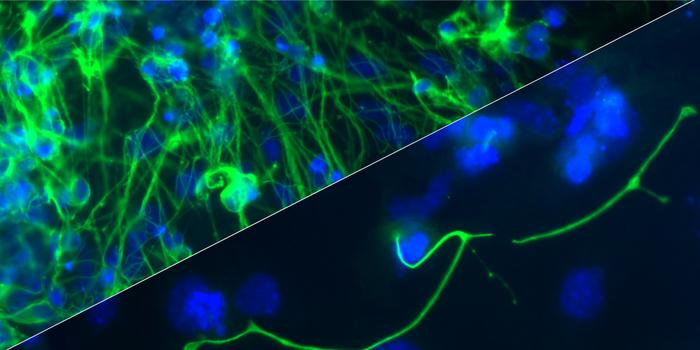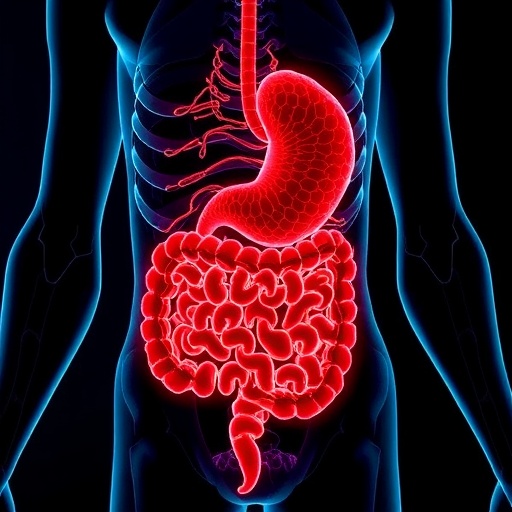
Researchers at the Babraham Institute’s Voigt lab have unveiled groundbreaking insights into the complex regulatory mechanisms governing developmental gene expression. Their recent study, published in the journal Molecular Cell, explores the concept of bivalency, where both activating and repressive epigenetic marks coexist on genes, thereby positioning them for either activation or silencing based on specific cellular cues. This discovery sheds light on the dynamic relationships between gene expression and cellular differentiation, especially in the context of embryonic stem cells (ESCs).
The phenomenon of bivalency is crucial for maintaining a poised state of developmental genes, allowing them to be quickly activated when favorable conditions arise. The Voigt lab’s meticulous research focused on identifying proteins that recognize these bivalent marks, revealing a new layer of regulation in how genes can be prepped for future expression. This has profound implications not only for our fundamental understanding of gene regulation but also for therapeutic strategies in regenerative medicine.
Central to the study is the identification of a specific protein, KAT6B, a member of the histone acetyltransferase complex. Previous research had hinted at the role of epigenetic modifications in gene regulation, but the precise mechanisms remained elusive. By demonstrating that KAT6B serves as a reader of bivalent marks, the team has added a pivotal piece to the puzzle of how stem cells differentiate into various cell types. This clarity into the molecular dialogue that occurs during differentiation processes is invaluable for biologists aiming to manipulate cell fate for therapeutic purposes.
The researchers were keen to understand how bivalent genes are maintained in an intermediate state that permits rapid response to differentiation signals. They meticulously engineered modified histones to study protein interactions at bivalent domains. Through innovative assays, they established that proteins preferentially bind to repressive marks rather than activating marks in this dual-mark paradigm. Their research exemplifies a pioneering approach that integrates molecular biology with cutting-edge technology and experimental techniques.
The implications of these findings extend well beyond basic biology. Understanding the molecular machinery that governs gene expression in stem cells provides critical insights into processes that can malfunction in diseases such as cancer, where differentiation cues are derailed, leading to uncontrolled cell growth. Furthermore, this knowledge can facilitate advancements in stem cell therapies designed for tissue regeneration and repair, addressing critical needs in regenerative medicine.
A significant finding from the Voigt lab is that the absence of KAT6B drastically hampers neuronal differentiation in embryonic stem cells. The absence of this protein yields cells that are less capable of forming neurons, suggesting a pivotal role for KAT6B in ensuring the activation of genes that direct neuronal fate. This observation underscores the importance of epigenetic regulation in developmental biology and provides a basis for exploring how alterations in these mechanisms can contribute to developmental disorders.
The research findings were corroborated by a range of experimental methods, including chromatin immunoprecipitation and histone modification profiling. These techniques allowed the team to piece together the intricate network of interactions that dictate gene expression dynamics during differentiation. By meticulously identifying the roles of specific proteins in binding to bivalent marks, the researchers painted a comprehensive picture of gene regulation’s spatial and temporal dimensions.
Moreover, the notion that bivalency can be influenced by various factors opens new avenues for research into how environmental cues and developmental signals can modulate the expression of crucial developmental genes. This highlights the interconnectivity between external factors and internal regulatory mechanisms, which is an essential consideration for anyone working in developmental biology or therapeutic domains.
Dr. Devisree Valsakumar, a postdoctoral researcher in the Voigt lab, aptly described these findings, comparing the bivalent marks to a ‘ready to go’ mechanism for genes in stem cells. This analogy resonates with the critical timing required in developmental processes, where missteps can lead to detrimental outcomes. The research team’s passion for shedding light on these complex interactions is evident in their commitment to exploring additional regulatory layers that might exist alongside known mechanisms.
Another compelling takeaway from this research is the characterization of nucleosomal asymmetry at bivalent domains. This asymmetry influences histone mark binding, thereby promoting the poising and eventual expression of developmental genes. This aspect of the study introduces a fascinating dimension to the understanding of chromatin structure and its functional implications in gene regulation.
The published research promises to inspire a surge of interest in the community focused on gene expression regulation, particularly in the context of differentiation and development. As scientists continue to probe the mysteries of embryonic development and stem cell biology, the findings from the Babraham Institute stand to influence a broad spectrum of inquiries, from basic research to practical applications in regenerative medicine.
In conclusion, the Voigt lab’s research marks a significant advancement in our understanding of developmental biology. By uncovering the intricate dancers that govern gene expression through epigenetic modifications and identifying crucial players like KAT6B, the scientific community is a step closer to leveraging this knowledge for therapeutic benefit. The dialogue between fundamental biology and its application in medicine is not only vital for addressing current medical challenges but is also poised to shape the future of regenerative health strategies.
Subject of Research: Cells
Article Title: Nucleosomal asymmetry shapes histone mark binding and promotes poising at bivalent domains
News Publication Date: 6-Feb-2025
Web References: http://dx.doi.org/10.1016/j.molcel.2024.12.002
References: Molecular Cell
Image Credits: Credit: Katy McLaughlin
Keywords: Developmental biology, Molecular biology
Tags: bivalency in gene regulationdevelopmental gene expressionepigenetic mechanisms in embryonic stem cellshistone acetyltransferase complex and gene regulationimplications of bivalency in regenerative medicineinsights from Babraham Institute researchKAT6B protein function in gene activationmolecular mechanisms of gene silencingpoised state of genes in cellular differentiationregulatory proteins in gene expressiontherapeutic strategies in gene therapyunderstanding gene regulation through epigenetics





